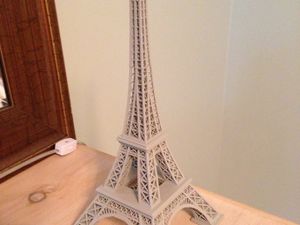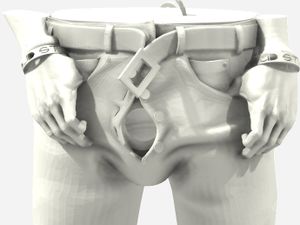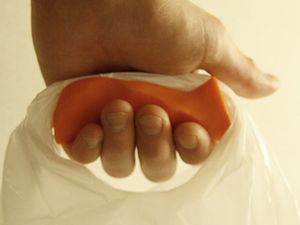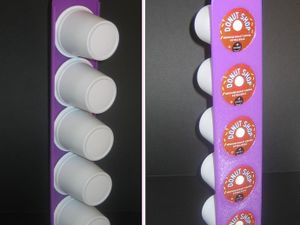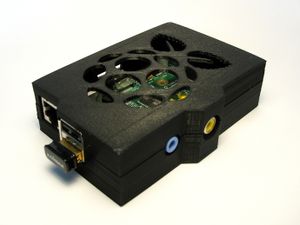User:Scottmilander
Contents
Introduction
My name is Scott Milander and I am a super senior at The Pennsylvania State University. I am majoring in Civil Engineering with a specialization in Geotechnical Materials. I work full-time for Penn State at the Larson Transportation Institute in the Pavements Lab as a Lab Technician, while taking classes part-time to finish my degree.
Penn State has a 3D Print Service called Printrverse that can be found here. Anyone in an Desgin course can submit their .STL file to be printed during the semester.
Projects
During this Fall 2013 semester, I am working on the Rainbow 2 Printer, which you can follow the status of the printer here. My group consists of Quinn Carpenter [1] and Abbie Letts[2] and myself.
Update: as of 10/1/13, the Rainbow Printer is now called the Blue Printer Group, which also contains several more people to help finish the printer. I am also working on the assembly of several MakerGear hot end packs, which our group has finished one so far, and hopefully another this week.
BLOGS
Weekly blogs will be written based on prompts provided by the professor. These blogs are typically related to RepRap in one way or another but not always directly.
Blog Number Eight
10/25/13
It was very interesting to see what types of other research that other Universities and Colleges are doing besides Penn State. When I was looking at the Virginia Tech DREAMS Lab [3], they were doing some very neat research. While looking at their website, I noticed that they have DreamVendor, an interactive 3D printing station for Virginia Tech students to use to print things for their design projects and personal objects. This is pretty similar to our Printrverse, which PSU students can submit designs and then we print the designs for them.
Blog Number Seven
10/19/13
For this weeks blog, I choose to read and talk about the Immunization Beads Garner Top Prize in 3D Printers for Peace Contest article. The vaccination beads are a very cool idea, but not really sure if they would gain enough popularity to become effective. The idea is to print a 3D VaxBead every time a child got an immunization vaccine. This might be useful in some developing countries, where recording these types of things is difficult, but in this technologically advanced society which we live I don’t see the point. What happens if the parent forgets to bring the necklace with the beads along and the medical personnel gives the child another vaccine which they already had, possibly the child could get ill or even death? Another possible dilemma would be if a small child thinks the beads are candy and eats them, how do you get them out. I am pretty sure most responsible parents know which vaccines their child has gotten already. When I applied to Penn State, they required my immunization record from my childhood, I was 23 and went to my Pediatrician and they still had my paper records and gave me a copy. Today, most doctors have electronic records which can be seen by most medical personnel. I know my doctor is pretty old and even he comes into the exam room with a tablet and records everything on the tablet and then it is stored on their network. So I don’t really think these beads are the way to go, but they are a neat idea.
Blog Number Six
10/11/13
After reading my classmates week five blogs, I noticed some information I missed while writing my week five blog about the intellectual property of 3D prints and the Penrose Triangle. While reading Brandon's blog, he mentioned that licenses can also restrict legal uses of the object, which I missed during my week five blog. Also, I didn't think about the actual source of the Penrose Triangle, who was the creator, it wasn't Schwanitz. In Ian's blog I like how he brought up the topic of international copyrights and how other countries don't have any copyright laws, such as China.
Blog Number Five
10/2/13
A) After re-examining my objects that I found on Thingiverse for week one blog, the K-cup holder could be protected by a patent, especially if they use K-cup in the name since it is owned by Keurig. If they use the name single serve coffee cup holder, it might help with the name, but not necessarily the object. The Eiffel Tower model, might be protected b copyright, if someone used a real copy and used a 3D scanner to produce this copy, but the architect has been dead for more than 70 years. The Raspberry Pi case has a copyrighted Raspberry Pi logo, so the logo is probably protected by copyright.
B) After looking through my fellow classmates objects, I did noticed a few objects that I would think were either copyright or patent protected. On Brandon's wiki page, he has a "Marker" sculpture from the video game "Dead Space", which I would think would be copyrighted since is a fairly new video game. On several other classmates wiki pages, I saw similar Raspberry Pi cases with the Raspberry Pi logo, which I think would be copyrighted logo. On Ryan's wiki page, I noticed he has the "Carrotman" a character from the 1960's tv show "Lost in Space", which I think would be a copyright problem. While looking at Quinn's wiki page, I noticed he has a "Yoda" head, which I would definitely think would be a copyright problem. And lastly, while looking at Madeline's wiki page, I noticed that she has a sculpture of "Mickey Mouse", which I would believe to have some sort of copyright.
C) Reasons that I would want licensing of non-copyrighted objects. On the legal side, it would help the creator with their current object in the future, while the cultural side it help the creator also in the future, while they think their piece is able to evolve.
D) The author talks about how this only affects two or three people. I think with the evolution of 3D printing, copying objects will affect more than just a few. I can only imagine that today that it affected more than two people.
Blog Number Four
9/25/13
After watching the video of Arduino and RepRap, their business model is give it away for free, just like open source. Arduino was designed to be very easy to use by anyone that wants to, such as an engineer or a hobbyists at home in their basement. The open source business model has both pros and cons. The pros are it is cheap or even free, everyone has access to it, and anyone can change it. The cons are anyone can see the code and change the code and now can become a "hacker". This can aslo be a pro, as anyone can see the code and detect bugs and then make it better.
The traditional business model of selling your prodcut to make money is pretty opposite of open source. It too has pros and cons. Some of the pros are there is usually only one version of the software out at a time, such as Apple only releasing an iOS every year, but the open source Android has multiple versions out in a year and not every phone works on every version. Another pro of the traditional model is the vast amount of profit the company makes each year from selling their product. But if you look at someone like Android, they make alot of money also, but it is from not selling their prodcut, but from such things as advertising and new apps. The cons are you are relying on the company to tell you that their prodcut is 100% perfect and has no bugs or glitches.
Both open source and the traditional business models have some very good pros and cons each. I guess it really depends on if the open source company has an alternative income source to self sustain its open source product. If not, than the traditional business model is the way to go.
Blog Responses from Week Three
After looking through the week three blogs of my fellow classmates, I did notice that Matt [4] commented on my week three blog about the printing of human kidney's. Also, he stated he liked my introduction and the link the the status of the Rainbow printer that we are working on. While reading Matt's blog, he has a lot of good information on his blog.
I also noticed that Justin [5] commented about my blog of the printing of human organs and how it could save millions of lives each year if perfected.
Blog Number Three
9/18/13
Part One: Already completed during the first week of class.
Part Two: While reading through my classmates blogs, I found several that were very interesting and have excellent layouts. But a couple of them stuck out to me as being very good blog pages. I liked Abbie's blog page, she has it broken down to several different pages, one for blogs, one for introduction of her and another for general course info. It has a good layout with different pages and not too cluttered, like some other blogs I have read. Abbie's blog page can be found here.
Part Three: While reading my classmates blogs, I noticed while reading Justin's blog, that his link to the Statue of Liberty is incorrect. His page can be found here.
I was able to find Peter Dorsey's blog through the search function. I liked his second blog about recycling the used filament. Although he didn't really say how he was going to recycle the filament, just that he was going to start on the project. I would like to know if he or his group is going to use an existing machine or purchase a "Filastruder" or "Filabot". Peter's blog page can be found here.
I tried to search for Adeola's blog page, but could not find it. I tried searching using his full name, email and part's of his name, but had no luck finding a wiki page for him.
Blog Number Two
9/11/13
While searching the web for interesting topics about 3D printing, I came across a article about printing human organs, particularly human kidneys. The website can be found at here. The company is taking living human kidney cells and combining them with a hydrogel solution which is then used for printing the kidney. They say the printed kidney can live for up to four months.
This would save millions of lives each year, for the people who are on transplant lists and die before ever recieving their new organ(s). The technology is still new and the organs are only a fraction of the size of the real organs, but they say that the printed organs function the same as the real ones do. It looks like the science from the movies like Star Trek and Blade Runner might become reality in the near future. I look forward to the future so see what else we can print using 3D printers, which can enhance or save lives.
Blog Number One
9/4/13
A) Something amazing/beautiful:
Here is something that looks beautiful, the Eiffel Tower. The STL can be found at here.
B) Somethinig funny or strange:
Here is something very strange, a birdhouse where the birds enter through the zipper of someone's pants. The STL can be found at here.
C) Something useless:
Here is something I find useless, a handle for shopping bags, where would one store this while shopping. The STL can be found at here.
D) Something useful:
This is something I find useful, a holder for my K-cup coffee. The STL file can be found at here.
E) The 'best' printable Raspberry Pi case:
Here is a neat looking Raspberry Pi Case that I found. The STL file can be found at here.
None of these things surprise me, but the Birdhouse with the zipper is very strange, not sure how someone thought of that as the enterance to the birdhouse. I think I saw more strange things than any other category, but all of these things are creative and took some imagination to come up with the designs.
